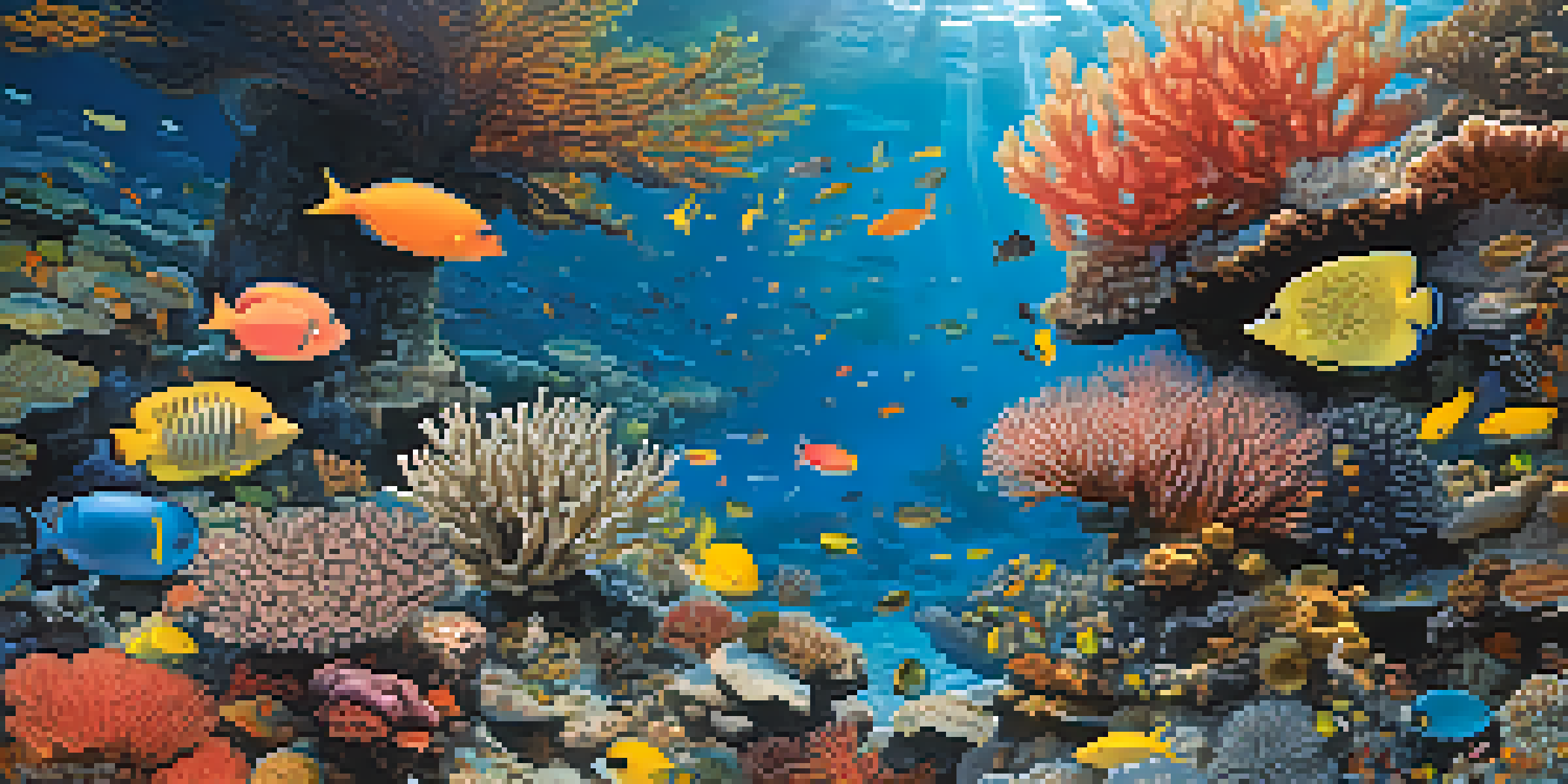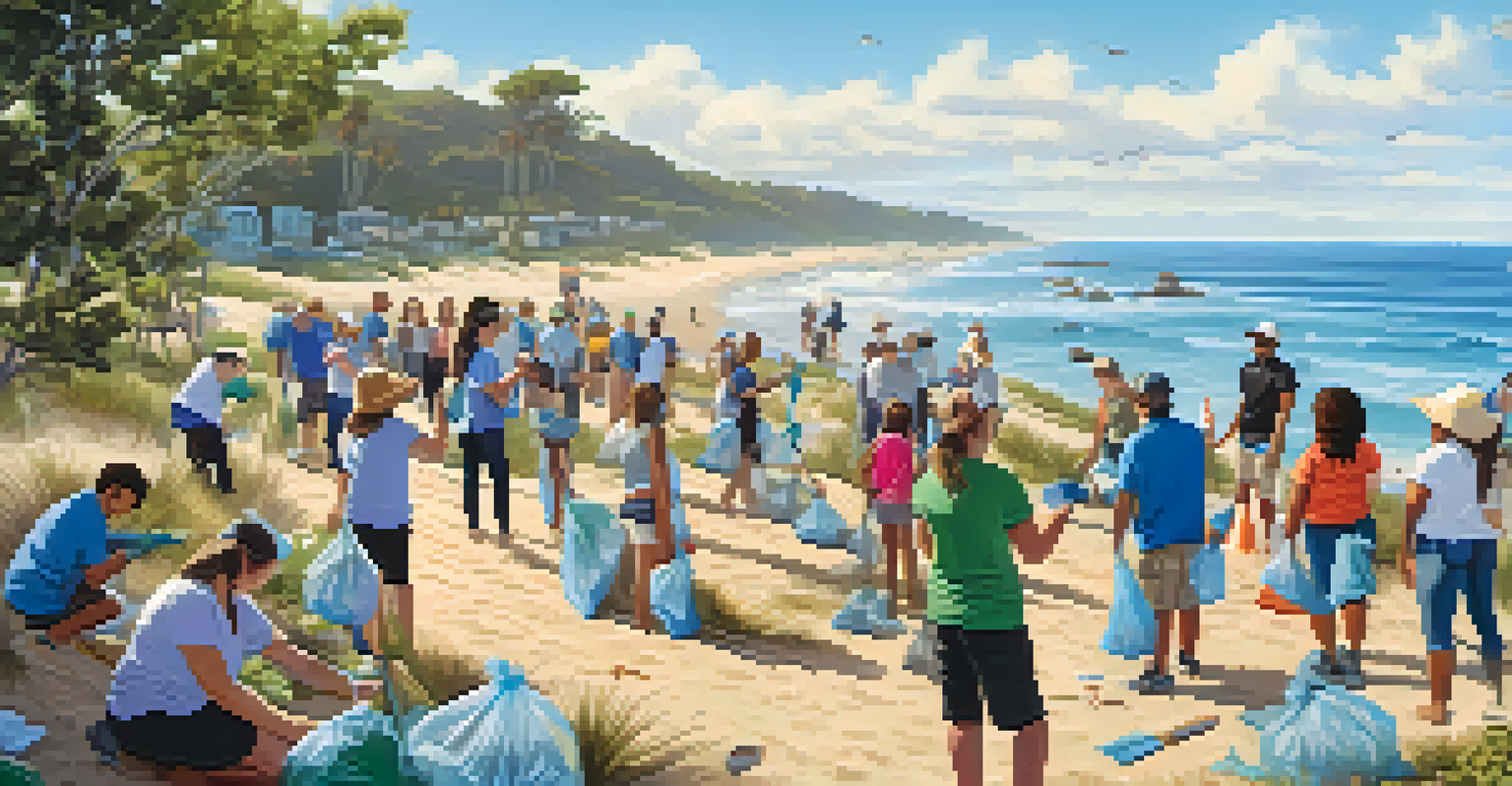Biodiversity Loss in San Diego: Threats and Conservation Efforts

Understanding Biodiversity and Its Importance
Biodiversity refers to the variety of life on Earth, encompassing the diversity of species, ecosystems, and genetic variations. In a city like San Diego, this richness supports not only the environment but also the economy, tourism, and community well-being. Biodiversity plays a crucial role in maintaining ecosystem services such as clean air and water, pollination of crops, and resilience against climate change.
Biodiversity is essential for maintaining the balance of ecosystems and the overall health of our planet.
When we think of biodiversity, imagine a vibrant coral reef filled with colorful fish, or a lush forest teeming with wildlife. Each organism, from the smallest insect to the largest mammal, plays a part in a complex web of life. Losing even one species can disrupt this web, leading to unforeseen consequences that impact us all.
In San Diego, the unique coastal and desert ecosystems are home to many endemic species, meaning they exist nowhere else on the planet. This makes the conservation of biodiversity particularly critical, not just for local wildlife, but for global ecological balance.
Current Threats to Biodiversity in San Diego
San Diego faces multiple threats to its biodiversity, primarily from urban development, pollution, and climate change. As the population grows, natural habitats are often replaced with homes, roads, and commercial spaces, fragmenting ecosystems and isolating wildlife. This habitat loss can lead to decreased species populations and increased competition for resources.

Pollution, particularly from runoff and waste, further exacerbates the problem. Chemicals and plastics can contaminate both terrestrial and marine environments, harming wildlife and disrupting food chains. For example, pollutants can affect the health of local fish populations, which are integral to the diets of larger predators, including birds and mammals.
Biodiversity Benefits Our Community
Biodiversity supports essential ecosystem services like clean air, water, and crop pollination, which are vital for community well-being.
Climate change adds another layer of complexity, altering weather patterns and sea levels, which can drastically impact species survival. Warmer temperatures can shift the habitats in which plants and animals thrive, pushing them out of their natural ranges and into competition with other species.
The Role of Invasive Species in Biodiversity Loss
Invasive species are non-native organisms that can disrupt local ecosystems, often leading to significant biodiversity loss. In San Diego, species such as the Argentine ant and the European green crab have outcompeted native species for resources, which can destabilize local food webs. These invaders can thrive due to a lack of natural predators in their new environment.
The greatest threat to our planet is the belief that someone else will save it.
For instance, the introduction of the red apple snail has not only affected native aquatic plants but also altered the behavior of local fish species. As these invasive species proliferate, they can outcompete native flora and fauna, leading to declines or even extinction of local species.
Addressing the issue of invasive species is crucial to preserving San Diego's unique biodiversity. This includes public awareness campaigns and management strategies to monitor and control invasive populations, allowing native species a fighting chance.
Conservation Efforts: Protecting San Diego's Ecosystems
Conservation efforts in San Diego are vital in combating biodiversity loss, focusing on habitat restoration, protection of endangered species, and community engagement. Organizations such as the San Diego Zoo Wildlife Alliance and the California Department of Fish and Wildlife are actively involved in these initiatives. They work to restore native habitats, which helps provide a safe haven for threatened species.
One notable project is the San Diego Habitat Conservation Plan, which aims to protect over 170,000 acres of natural land in the region. By conserving these areas, we not only safeguard wildlife habitats but also preserve the natural beauty and recreational opportunities that make San Diego unique.
Urbanization Threatens Ecosystems
Rapid urban development in San Diego leads to habitat loss and fragmentation, putting immense pressure on local wildlife populations.
Community involvement plays a significant role in these conservation efforts. Local volunteers often participate in habitat restoration projects, educational programs, and citizen science initiatives, fostering a sense of stewardship and connection to the environment.
The Importance of Community Engagement in Conservation
Community engagement is essential for successful conservation efforts, as it helps raise awareness and brings people together to take action. In San Diego, various organizations host events and workshops to educate residents about local wildlife and ecosystems. These interactions can inspire individuals to become advocates for biodiversity conservation in their own neighborhoods.
For example, beach clean-ups and native plant restoration days not only improve local habitats but also create a sense of community. Participants often leave with a greater understanding of the environmental issues at play and a commitment to making a difference, whether through sustainable practices or supporting local conservation initiatives.
Engaging the community can also lead to innovative solutions and collaborations. When people from diverse backgrounds come together to share their knowledge and experiences, they can tackle biodiversity challenges in creative ways that benefit both the environment and the community.
The Role of Policy in Biodiversity Conservation
Effective policy is crucial in addressing biodiversity loss and protecting ecosystems in San Diego. Local governments, alongside state and federal agencies, can implement regulations that prioritize conservation efforts. For instance, zoning laws can restrict development in sensitive areas, helping to preserve critical habitats for endangered species.
Policies can also provide funding for research and conservation programs, allowing organizations to monitor biodiversity and develop strategies for protection. This can include initiatives aimed at restoring degraded habitats or controlling invasive species populations.
Community Engagement is Key
Active community involvement in conservation initiatives fosters awareness and inspires collective action to protect local biodiversity.
Public policies that promote sustainable practices, such as water conservation and waste reduction, can also have a positive impact on biodiversity. By encouraging residents and businesses to adopt eco-friendly practices, San Diego can work towards a healthier environment for both people and wildlife.
Looking Ahead: The Future of Biodiversity in San Diego
As we look to the future, the fate of biodiversity in San Diego hinges on our collective actions. With ongoing threats from urbanization, climate change, and invasive species, it’s essential we remain vigilant and proactive in our conservation efforts. The continuation of successful programs and community engagement will be vital in creating a sustainable environment for future generations.
Innovative approaches, such as using technology for monitoring wildlife populations or employing native landscaping, can contribute to a healthier ecosystem. Additionally, fostering partnerships between governmental bodies, NGOs, and local communities can amplify conservation efforts and ensure a holistic approach.

Ultimately, preserving biodiversity in San Diego is not just about saving species; it's about enriching our own lives. A thriving natural environment enhances our quality of life, supports our economy, and provides a legacy of ecological richness for generations to come.